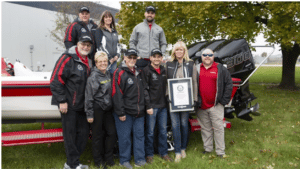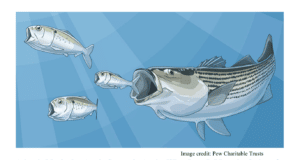A storm must develop as a Tropical Depression and intensify into a Tropical Storm before it is given an official name.
Here are the official definitions of powerful storms, from the National Weather Service.
Tropical Depression
A tropical cyclone in which the maximum sustained surface wind speed (using the U.S. 1-minute average) is 33 kt (38 mph or 62 km/hr) or less.
Tropical Storm
A tropical cyclone in which the maximum sustained surface wind speed (using the U.S. 1-minute average) ranges from 34 kt (39 mph or 63 km/hr) to 63 kt (73 mph or 118 km/hr).
Hurricane
A tropical cyclone in which the maximum sustained surface wind (using the U.S. 1-minute average) is 64 kt (74 mph or 119 km/hr) or more. The term hurricane is used for Northern Hemisphere tropical cyclones east of the International Dateline to the Greenwich Meridian. The term typhoon is used for Pacific tropical cyclones north of the Equator west of the International Dateline.
Nor’easter
A cyclonic storm occurring off the east coast of North America notorious for producing heavy snow, rain, and tremendous waves that crash onto Atlantic beaches, often causing beach erosion and structural damage. Wind gusts associated with these storms can exceed hurricane force in intensity. A nor’easter gets its name from the continuously strong northeasterly winds blowing in from the ocean ahead of the storm and over the coastal areas.









